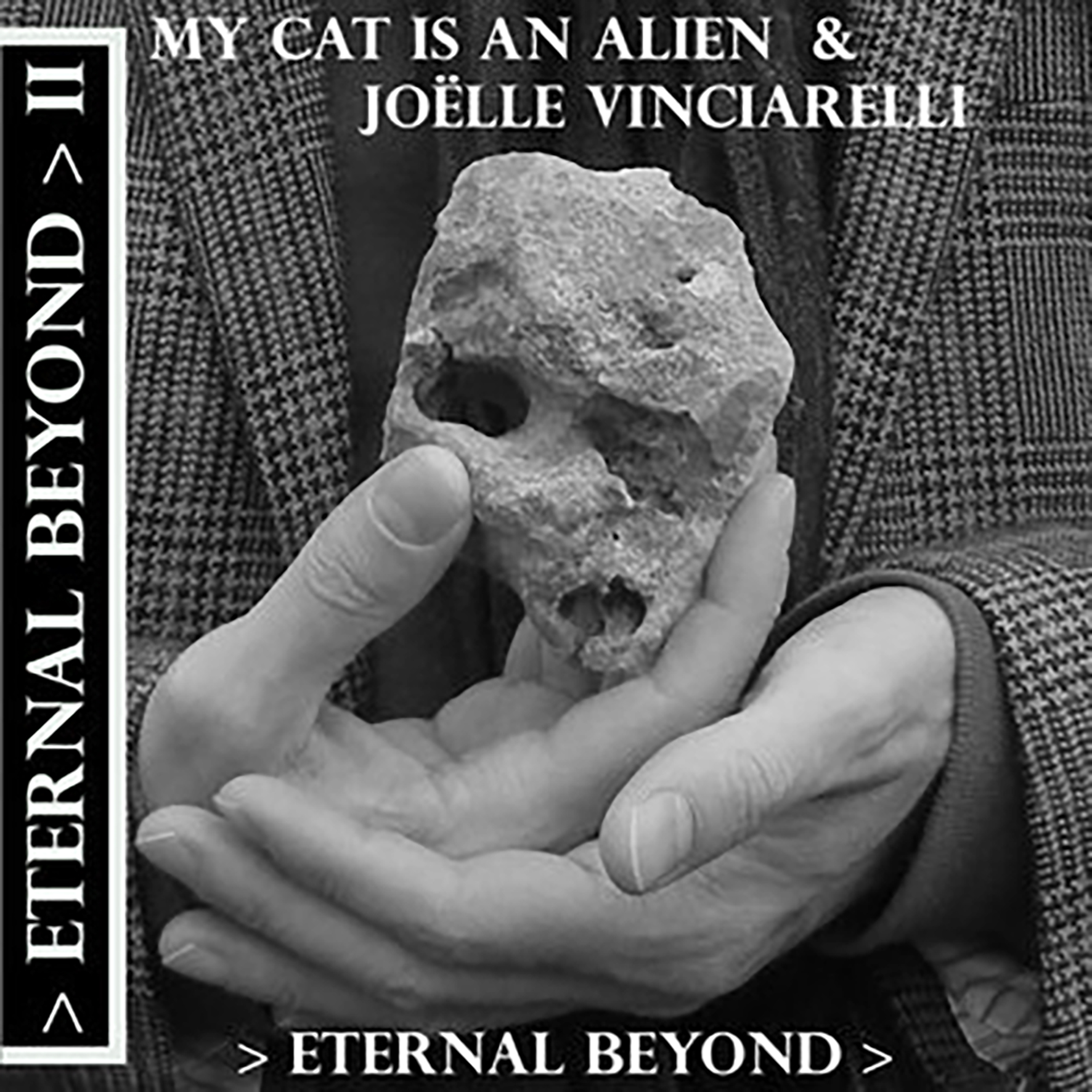My Cat is an Alien with Joëlle Vinciarelli, "Eternal Beyond II"
 The Opalio brothers have had quite an impressive history of adventurous collaborations over the years, as they have been joined by many of the most iconic figures in underground music, as well as an inspired array of interesting folks that I had not previously encountered. Naturally, a number of those unions have yielded wonderful results, but one of my favorites was the Opalios' pairing with Talweg/La Morte Young's Joëlle Vinciarelli for 2016’s Eternal Beyond. Several other artists have gamely and effectively adapted themselves to the brothers' unique aesthetic and working method over the years, yet Vinciarelli is the one who was most successful at finding and filling a space that made the collaboration feel like something more than the mere sum of its parts. More specifically, she brings some welcome bite and visceral intensity to the Opalios' phantasmagoric and alien reveries. Consequently, I am absolutely thrilled to report that this trio has now become a recurring project and that Eternal Beyond II is every good as its predecessor (if not even better).
The Opalio brothers have had quite an impressive history of adventurous collaborations over the years, as they have been joined by many of the most iconic figures in underground music, as well as an inspired array of interesting folks that I had not previously encountered. Naturally, a number of those unions have yielded wonderful results, but one of my favorites was the Opalios' pairing with Talweg/La Morte Young's Joëlle Vinciarelli for 2016’s Eternal Beyond. Several other artists have gamely and effectively adapted themselves to the brothers' unique aesthetic and working method over the years, yet Vinciarelli is the one who was most successful at finding and filling a space that made the collaboration feel like something more than the mere sum of its parts. More specifically, she brings some welcome bite and visceral intensity to the Opalios' phantasmagoric and alien reveries. Consequently, I am absolutely thrilled to report that this trio has now become a recurring project and that Eternal Beyond II is every good as its predecessor (if not even better).
Elliptical Noise/Up Against the Wall, Motherfuckers!/Opax
I have not delved very deeply into Joëlle Vinciarelli’s work in Talweg at this point, but I have heard enough to grasp that "black metal" is a woefully inadequate and misleading term for her art.In fact, nothing about Talweg (or Vinciarelli) is remotely conventional at all, which is perhaps why she makes such a perfect foil for her fellow Alps-dwellers.In her own way, she is every bit as genre-defying and radical as the Opalios, but the key difference is that she is driven towards earthy, timeless, and primal forces rather than looking towards the stars for inspiration.Consequently, the improbable collision of Vinciarelli’s "Cro-Magnon grunt and cultic energies" with the Opalios' mind-melting, deep space lysergia is a perfect, unholy union, enhancing the brothers’ smeared and disorienting psychedelia with a healthy dose of seismic, elemental power.That said, it seems like Vinciarelli also brings out some of those normally latent elements in the Opalios themselves, as the churning and jangling intensity of the opening "Eternal Rage Against the Dying of the Light" is driven primarily by the brothers' violent misuse of an "antique upright piano soundboard."
It is truly impressive that Maurizio and Roberto managed to unleash such an apocalyptic cacophony in real-time, as the crescendo of "Eternal Rage" sounds like a heaving maelstrom of countless rusted steel strings being viciously attacked at once.There are a lot of other great and unexpected elements to the piece as well, however, ranging from sharp metallic scrapes to looping, angelic vocal melodies.And, of course, there are also the expected elements: disorienting falsetto vocal drones, buzzing electronics, and howling eruptions of noise.Happily, all of those various threads coexist quite organically and seamlessly, resembling an inspired collision of an ancient throat-singing ritual, a pack of howling wolves, and a goddamn supernova.Unsurprisingly, those ingredients make for quite a potent cocktail and "Eternal Rage" easily ranks among the best MCIAA pieces in recent memory.
The album's shorter second piece is considerably less extreme, as it is largely centered on the chiming of an "old pendulum clock mechanism."In fact, once Vinciarelli's melodic, wordless vocals appear, "Eternal Ectoplasmic Communication" almost feels like a lullaby of sorts.That resemblance does not last particularly long, however, as that melody gradually wanders off course as queasily lingering electronics and Maurizio's broken-sounding self-made string instrument creep in to curdle the idyll.The overall experience feels akin to waking up in an unfamiliar house to find a supernatural fog slowly rolling out of a haunted antique clock.While it never quite catches fire or builds towards anything more substantial, it casts quite an effective spell of seething uneasiness and the strangely warbling vocals call to mind a beloved stuff animal that is trying desperately to warn me of imminent peril, but is too paralyzed with fear to do anything but gibber helplessly.While it is quite a solid and likable piece, the earlier "Eternal Rage" unavoidably steals the show on Eternal Beyond II, as it beautifully transcends everything I usually expect from MCIAA. "Eternal Ectoplasmic Communication," on the other hand, feels a bit more familiar (and considerably less apocalyptic).
It is hard to explain why I love the Opalio brothers' albums with Vinciarelli so much without making it sounds like their other albums are in some way lacking, but I will try anyway: a "normal" My Cat is an Alien album is like a window into someone else's deeply weird and inscrutable dream (and I can think of no one else who reliably conjures up otherworldly vistas as strange and absorbing as those of the Opalios).When Vinciarelli is involved, however, it feels like that dream state is tenuously anchored to a recognizable physical world rather than a straight-up free fall into a bottomless rabbit hole of swirling, nightmarish unreality.Plunging into that altered state is always a compelling experience, but it is a more profound and dynamic one when I can still see distant vestiges of what I left behind (nods to conventional scales, scraping metal, guttural voices).In essence, it is a matter of grounding and contrast.No one does deep space psychedelia better than My Cat is an Alien, but with Eternal Beyond II, the Opalios and Vinciarelli evoke something significantly different that I cannot find anywhere else: thesingular collision of the imagined past versus the imagined future, the spectral versus the corporeal, and flesh-and-blood humanity versus the unknowable, abstract vastness of the cosmos.
Samples can be found here.



